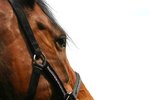
You'll run across Yoakum, Texas, on the Coastal Plain just a hop, skip and a jump southeast of San Antonio on the way to Victoria. It's known as the Leather Capital of Texas, and is the long-time home of Texas Tanning and Manufacturing Co., better known as Tex Tan, maker of Hereford brand saddles.
The City
Yoakum sits square on the boundary line between DeWitt and Lavaca counties and has since 1835, before Texas separated itself from Mexico via the Alamo and San Jacinto. The little settlement was big as a gathering spot for herds to be pushed up the Chisholm Trail, but went from tending cattle to tending steam engines when the railroad arrived in 1887 and created lots of jobs. It was incorporated as Yoakum in 1888, and by 1917 it was a bustling metropolis of more than 7,500 souls when the Yoakum Hide and Leather Co. opened for business tanning leather. It may have slipped a little in population since then (5,731 in 2000), but continues to be a thriving town. It hosts an annual Youth Rodeo and is a popular springtime destination for viewing the famous Texas bluebonnets and other wildflowers.
The Company
A little tannery on Brushy Creek was acquired by Carl Welhausen and moved into town, where it got bigger and was renamed the Texas Hide and Leather Co. By 1929, with an expanding inventory of leather products from saddles to wallets, it became Texas Tanning and Manufacturing Co., but this mouthful soon got shrunk down to Tex Tan. In 1956 it merged with Tandy Corp., and it became a division of that company as Tex Tan Western Leather in 1961.
The Hereford Brand
Verifiable information is sketchy, but a story in the Victoria Advocate from 2006, when the plant in Yoakum burned down, indicates that Tex Tan began making Hereford Brand saddles in the 1930s, about the same time they began making their "Texas Ranger" line of pistol belts and holsters, both real and toy varieties. Tex Tan's Hereford saddle, in all its incarnations from roping to barrel racing to parade, has gained a reputation for high quality and durability and is still widely available, with a brisk trade in used modern and historic examples. Old Herefords are still being dug out of barns and attics to be lovingly reconditioned and put back into service.
Is It a Real Hereford?
Tex Tan's Hereford saddles are reported to be built universally on a rawhide-covered tree, whether wood or fiberglass. Examine all parts of the saddle for maker's marks. Tex Tan Herefords made since 1945 should have serial numbers stamped into the leather; likely places to look are on the skirt under the fender, on the fender itself and on the latigo or its keeper. The back of the cantle and the top of the horn may also be marked. Check the stirrup leathers for modern Blevins quick-change buckles or the older Al Ray type. Of course, if the leathers are laced it means the saddle is really old and has not been updated. If you find identifying marks, contact Tex Tan in Yoakum to see if they can pin down when the saddle was made.
References
Resources
Photo Credits
-
Image Source/Photodisc/Getty Images


